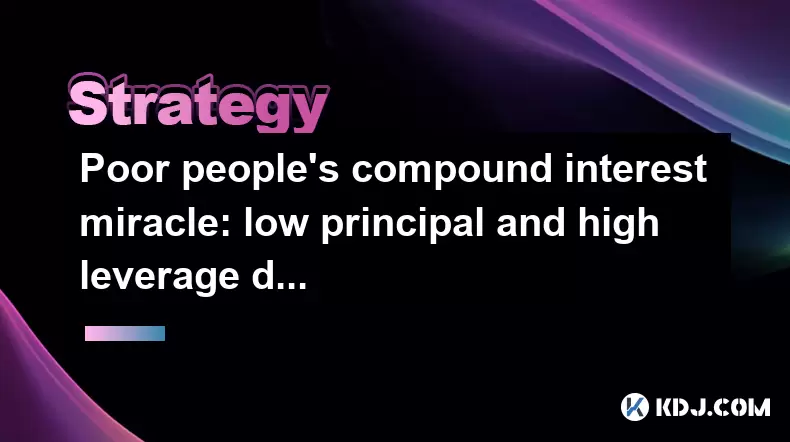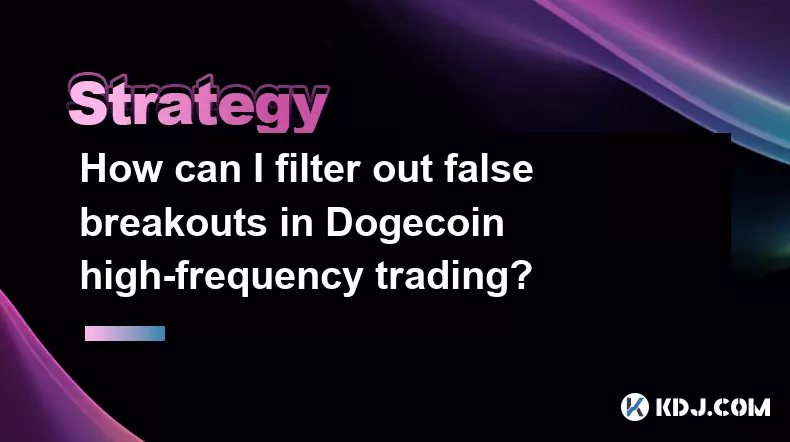-
 bitcoin
bitcoin $114779.865156 USD
2.30% -
 ethereum
ethereum $4226.519789 USD
2.39% -
 tether
tether $1.000545 USD
0.04% -
 xrp
xrp $2.890223 USD
0.92% -
 bnb
bnb $1030.029301 USD
2.95% -
 solana
solana $212.824944 USD
1.69% -
 usd-coin
usd-coin $0.999757 USD
0.01% -
 dogecoin
dogecoin $0.234961 USD
-0.27% -
 tron
tron $0.337174 USD
0.42% -
 cardano
cardano $0.804783 USD
0.09% -
 hyperliquid
hyperliquid $45.748770 USD
-2.85% -
 chainlink
chainlink $21.699170 USD
0.82% -
 ethena-usde
ethena-usde $1.001452 USD
0.08% -
 avalanche
avalanche $30.237800 USD
1.14% -
 stellar
stellar $0.372604 USD
1.52%
Poor people's compound interest miracle: low principal and high leverage double practice
Compound interest and leverage can transform small crypto investments into substantial gains, but they come with high risks due to market volatility.
Jun 05, 2025 at 04:28 pm

Introduction to Compound Interest and Leverage in Cryptocurrency
Compound interest and leverage are two powerful tools that can significantly enhance investment returns, particularly within the cryptocurrency market. For those with limited initial capital, understanding how to effectively use these strategies can be transformative. In this article, we will explore how individuals with low principal can harness the power of compound interest and high leverage to potentially achieve substantial gains in the volatile yet rewarding world of cryptocurrencies.
Understanding Compound Interest in Crypto
Compound interest is the interest earned on both the initial principal and the accumulated interest from previous periods. In the context of cryptocurrencies, this can be achieved through various means such as staking, yield farming, or holding assets that pay dividends.
Staking involves holding your cryptocurrency in a wallet to support the operations of a blockchain network, and in return, you receive rewards. For example, if you stake 100 units of a cryptocurrency with an annual yield of 5%, at the end of the year, you would have 105 units. If you continue to stake these 105 units the following year, you will earn interest on the new total, resulting in a compounded growth.
Yield farming is another method where you lend your cryptocurrency to others to earn interest. Platforms like Compound or Aave allow users to deposit their crypto assets into liquidity pools, earning interest from borrowers who use these pools. The interest earned can be reinvested to further compound the returns.
Leverage: Amplifying Gains and Risks
Leverage allows investors to borrow funds to increase their exposure to an investment. In the crypto market, leverage can be used to trade larger positions than what one's capital would normally allow. This can significantly amplify both gains and losses.
For instance, if you have $100 and use 10x leverage, you can control a $1,000 position. If the market moves in your favor by 10%, your profit would be $100 (10% of $1,000), effectively doubling your initial investment. However, if the market moves against you by 10%, you would lose your entire $100.
Combining Low Principal with High Leverage
For those starting with a low principal, combining the power of compound interest with high leverage can be a potent strategy. Here’s how you can approach this:
- Start with a small principal: Begin by investing a small amount that you can afford to lose. This could be as little as $10 or $20.
- Choose a reliable platform: Select a reputable exchange or DeFi platform that offers both staking and leverage options. Examples include Binance, Coinbase, and Aave.
- Stake your initial investment: Deposit your cryptocurrency into a staking pool to start earning compound interest. For example, if you stake $20 in a pool with a 5% annual yield, you will have $21 at the end of the year.
- Use leverage cautiously: Once you have a bit more capital, consider using leverage to trade. Start with low leverage, such as 2x or 3x, to minimize risk. As you gain confidence and experience, you can gradually increase your leverage.
- Reinvest your earnings: Use the profits from your leveraged trades and the interest from staking to further compound your returns. Reinvest these earnings back into staking or trading to accelerate growth.
Practical Example of Low Principal and High Leverage
Let’s walk through a practical example to illustrate how this strategy might work:
- Initial Investment: You start with $50 and decide to stake it in a cryptocurrency that offers a 6% annual yield. After one year, your $50 grows to $53.
- First Year Earnings: You then use the $53 to trade with 5x leverage. If you make a 10% profit on your leveraged position, you earn $26.50 (10% of $265, which is 5x $53).
- Reinvestment: You add the $26.50 to your initial $53, making a new total of $79.50. You stake this amount again at the 6% yield, and at the end of the second year, you have $84.27.
- Second Year Trading: With $84.27, you again use 5x leverage and make another 10% profit, earning $42.14. You now have $126.41.
By the end of two years, your initial $50 has grown to $126.41, demonstrating the power of combining low principal with high leverage and compound interest.
Risks and Considerations
While the potential for high returns is alluring, it is crucial to understand the risks involved:
- Market Volatility: Cryptocurrencies are known for their extreme volatility, which can lead to significant losses when using leverage.
- Liquidation Risk: If the market moves against your leveraged position, you could face liquidation, resulting in the loss of your entire investment.
- Platform Risk: The reliability and security of the platform you use for staking and trading are critical. Always do thorough research before committing funds.
FAQs
Q: Can I start with even less than $50 and still use this strategy?A: Yes, you can start with any amount you feel comfortable with. The key is to reinvest your earnings and use leverage cautiously to grow your investment over time.
Q: How do I choose the right cryptocurrency for staking?A: Look for cryptocurrencies with a solid track record of reliability and high staking rewards. Research the project’s fundamentals, the security of the network, and the historical performance of the staking rewards.
Q: Is it possible to lose more than my initial investment when using leverage?A: Yes, if you use high leverage and the market moves against you, you could lose more than your initial investment. It's important to use stop-loss orders and only risk what you can afford to lose.
Q: How often should I reinvest my earnings to maximize compound interest?A: The frequency of reinvestment depends on the platform and the specific cryptocurrency. Generally, the more frequently you can reinvest your earnings, the faster your investment will grow due to compound interest.
Disclaimer:info@kdj.com
The information provided is not trading advice. kdj.com does not assume any responsibility for any investments made based on the information provided in this article. Cryptocurrencies are highly volatile and it is highly recommended that you invest with caution after thorough research!
If you believe that the content used on this website infringes your copyright, please contact us immediately (info@kdj.com) and we will delete it promptly.
- BlockDAG, DOGE, HYPE Sponsorship: Crypto Trends Shaping 2025
- 2025-10-01 00:25:13
- Deutsche Börse and Circle: A StableCoin Adoption Powerhouse in Europe
- 2025-10-01 00:25:13
- BlockDAG's Presale Buzz: Is It the Crypto to Watch in October 2025?
- 2025-10-01 00:30:13
- Bitcoin, Crypto, and IQ: When Genius Meets Digital Gold?
- 2025-10-01 00:30:13
- Stablecoins, American Innovation, and Wallet Tokens: The Next Frontier
- 2025-10-01 00:35:12
- NBU, Coins, and Crypto in Ukraine: A New Yorker's Take
- 2025-10-01 00:45:14
Related knowledge

Practical parameter settings for a Bitcoin multi-timeframe moving average system
Sep 18,2025 at 10:54pm
Optimizing Timeframe Combinations for Bitcoin Trading1. Selecting appropriate timeframes is crucial when building a multi-timeframe moving average sys...

How can I filter out false breakouts in Dogecoin high-frequency trading?
Sep 22,2025 at 01:00am
Understanding False Breakouts in Dogecoin Trading1. A false breakout occurs when Dogecoin's price appears to move beyond a defined support or resistan...

Techniques for identifying tops and bottoms in the Bitcoin on-chain NVT model
Sep 20,2025 at 07:54pm
Understanding the NVT Model in Bitcoin Analysis1. The Network Value to Transactions (NVT) ratio is often described as the 'P/E ratio' of the cryptocur...

What does the surge in open interest in Bitcoincoin futures mean?
Sep 20,2025 at 11:18pm
Understanding the Surge in Dogecoin Futures Open Interest1. A surge in open interest within Dogecoin futures indicates a growing number of active cont...

How can I use the Ethereum USDT premium to gauge market sentiment?
Sep 18,2025 at 11:55pm
Understanding the Ethereum USDT Premium1. The Ethereum USDT premium refers to the price difference between USDT (Tether) traded on Ethereum-based plat...

What should I do if Ethereum staking yields decline?
Sep 20,2025 at 06:18am
Understanding the Causes Behind Declining Ethereum Staking Yields1. The Ethereum network transitioned to a proof-of-stake consensus mechanism with the...

Practical parameter settings for a Bitcoin multi-timeframe moving average system
Sep 18,2025 at 10:54pm
Optimizing Timeframe Combinations for Bitcoin Trading1. Selecting appropriate timeframes is crucial when building a multi-timeframe moving average sys...

How can I filter out false breakouts in Dogecoin high-frequency trading?
Sep 22,2025 at 01:00am
Understanding False Breakouts in Dogecoin Trading1. A false breakout occurs when Dogecoin's price appears to move beyond a defined support or resistan...

Techniques for identifying tops and bottoms in the Bitcoin on-chain NVT model
Sep 20,2025 at 07:54pm
Understanding the NVT Model in Bitcoin Analysis1. The Network Value to Transactions (NVT) ratio is often described as the 'P/E ratio' of the cryptocur...

What does the surge in open interest in Bitcoincoin futures mean?
Sep 20,2025 at 11:18pm
Understanding the Surge in Dogecoin Futures Open Interest1. A surge in open interest within Dogecoin futures indicates a growing number of active cont...

How can I use the Ethereum USDT premium to gauge market sentiment?
Sep 18,2025 at 11:55pm
Understanding the Ethereum USDT Premium1. The Ethereum USDT premium refers to the price difference between USDT (Tether) traded on Ethereum-based plat...

What should I do if Ethereum staking yields decline?
Sep 20,2025 at 06:18am
Understanding the Causes Behind Declining Ethereum Staking Yields1. The Ethereum network transitioned to a proof-of-stake consensus mechanism with the...
See all articles










































































